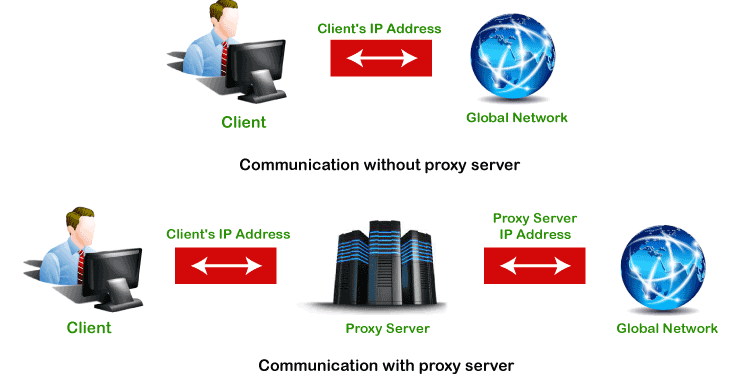Forward proxy
Forward proxies are used to transmit data to groups of user within an internal network. When the request is sent by the sender, the proxy server assesses the data to decide whether it should go ahead and form a connection.
Public proxy
Public proxies are available to anyone, and it works by providing its users its IP address to hide their identity. This proxy although cheap and easily accessible leaves it’s users more at risk of their data being breached.
Shared proxy
This proxy enables multiple users to engage with this proxy in a given time by providing the users with a shared IP address.
Residential proxy
This proxy gives the user an IP address that can be traced to a specific physical device where all requests are assessed and redirected.
Anonymous proxy
Anonymous proxy servers aim to conceal internet activity by assessing the user’s request while hiding their identity.
High anonymity proxy
This proxy is basically an anonymous proxy that takes an additional step to concealing the user’s identity. This is done by the user’s information being deleted before the proxy attempts to connect to the target site.
Transparent proxy
Transparent proxies can be used to remain hidden from those that it is enforced on. This type of proxy is useful for organisations which wish to implement a proxy without raising the employee’s awareness that they are using one.
Transparent proxies are more vulnerable to specific security threats such as SYN flood denial of service attacks.
Distorting proxy
Distorting proxies change their IP address to hide their identity from the target website. This is a good option for users who wish to keep their location hidden while using the internet.
Data centre proxy
This proxy server can be located physically in a data center where the user’s requests are assessed and redirected. It is not associated with an internet server but a separate organisation through a data centre.
Rotating proxy
Rotating proxies designate a different IP address to its users, an address which is different from the device that previously connected to it.
Reverse Proxy
Instead of being situated ‘in front’ of the users, the reverse proxy is fixed in front of the web servers which assesses and directs requestions from a browser to the web server.
The proxy receives requests from the user at the network edge of the web server and then redirects the request receives replied from the original server.
SSL proxy
An SSL (secure sockets layer) proxy encrypts the data sent back and forth on both sides, providing enhanced protection. These proxies are the better option for organisations to have in place for further security.
TOR proxy
This proxy directs data across various networks globally present to obscure the user’s address. Data is encrypted in multiple layers for further privacy protection and when the data reaches the target destination, each layer is decrypted to reveal the original data.
I2P proxy
Similar to the TOR proxy but more enhanced.
Suffix proxy
This proxy adds the proxy’s name to the URL of the requested content and is used to bypass web filters however does not provide much privacy.
